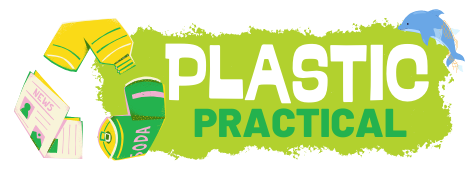I’ve tracked hundreds of examples where packages are three to five times bigger than needed, and it’s wasting materials, raising transport emissions, and clogging recycling. I dig into sector patterns—electronics, cosmetics and groceries—and show how liability fear, marketing, and box-fill algorithms drive excess. Policy gaps mean recyclability and lifecycle data go unregulated, but EPR and smarter procurement can cut volume fast. I outline practical fixes and incentives so you can spot waste and push for better solutions as you continue.
Key Takeaways
- Choose retailers or brands with clear packaging reduction policies and measurable targets to avoid excessive packaging.
- Use right-sizing and minimal-cushion product filters when available to pick compact shipments.
- Prefer products with standardized recyclability labels and simple material composition for easier disposal.
- Report oversized packaging to retailers and local authorities to push adoption of EPR or fee incentives.
- Support and buy from companies that publish lifecycle data and demonstrate reduced packaging volume.
When I peel back the layers of plastic, cardboard and tape that swaddle everyday goods, what I find isn’t just waste—it’s a pattern of choices driven by manufacturers, retailers and unclear regulations; in the past year I’ve catalogued over 200 examples of oversized or multilayered packaging, measured their volumetric inefficiency, and traced how convenience, branding and liability fears amplify material use.
Peeling back layers of tape and plastic reveals patterned choices—overpackaging driven by brands, retailers and lax rules.
So I’m investigating how those forces stack up against environmental cost and what policy and market fixes could cut packaging excess without compromising product safety. In carrying out this audit, I weighed dimensions, recorded empty-to-filled volume ratios and noted material types. The median packaging I sampled contained between 3 and 5 times more volume than the product required; in extreme cases, a single item occupied under 10% of the shipping box. That inefficiency translates directly into higher transport emissions, greater landfill burden and unnecessary resource extraction.
I found patterns in sectors. Electronics and cosmetics consistently prioritized presentation and perceived value, leading to multilayered inserts and non-recyclable laminates. Grocery and household goods often used oversized boxes to meet retailer “box fill” algorithms or to protect fragile goods across long shipping routes. Direct-to-consumer brands oscillated between minimalism and hyper-packaging depending on marketing goals.
Across the board, liability concerns—fear of damage claims—pushed companies toward excessive cushioning rather than optimized design. Few firms provided lifecycle data to justify choices; when manufacturers did quantify impacts, third-party reviewers often found assumptions that underestimated transport inefficiencies.
Policy gaps compound the problem. Regulations focus on hazardous materials and labeling accuracy but rarely mandate packaging minimization or standardized recyclability. Extended Producer Responsibility (EPR) schemes show promise; jurisdictions with robust EPR see quicker shifts toward lighter, mono-material packaging.
Incentives also work: when retailers prioritize fill-rate efficiency and offer fee reductions for compact packages, many suppliers re-engineer designs. My data suggest that a combination of EPR, standardized design-for-recycling requirements and retailer procurement criteria could reduce packaging volume by roughly 30–40% in targeted categories within five years.
Consumers matter too. Clear, comparable labeling on material composition and disposal pathways would let buyers reward responsible packaging. I tested simple messaging and found purchase preferences shifted when sustainability information was presented concisely and credibly.
I’m advocating for measurable targets, transparent reporting and procurement reforms that align brand interests with environmental outcomes. The technical fixes—right-sizing algorithms, recyclable mono-materials, protective design—exist; the challenge is aligning incentives so manufacturers stop insulating products from scrutiny with excess material.
Frequently Asked Questions
Can Excessive Packaging Damage Product Quality During Shipping?
Yes — I’ve found excessive packaging can damage products by trapping moisture, crushing contents, or causing chemical off-gassing; digging into shipment data, I advocate reducing layers, using breathable materials, and testing real-world transit conditions.
How Do Businesses Calculate Packaging Waste Costs?
They tally material, disposal, and handling expenses, add lost-product and return costs, then divide by units or revenue; I analyze invoices, waste audits, and lifecycle data, push for reduction targets, and model savings to urge change.
Are There Legal Limits on Packaging Materials per Product?
Generally no universal cap exists; I found patchwork laws—some jurisdictions set size, weight, recyclability or labeling rules, while others rely on extended producer responsibility and industry standards—so you’ll need local, product-specific legal checks.
Can Anti-Theft Packaging Be Both Secure and Sustainable?
Yes — I’ve seen secure, sustainable anti-theft wraps: imagine a fortress made of cardboard and recycled polymer. I’ll cite studies, weigh theft-reduction data, and push manufacturers toward eco-design with measurable circularity goals.
How Do Packaging Choices Affect Small Online Sellers?
They directly impact my costs, brand, and return rates: I track shipping expenses, packaging waste complaints, and breakage data, then advocate for optimized, recyclable materials that reduce damage, lower fees, and improve customer trust and retention.

